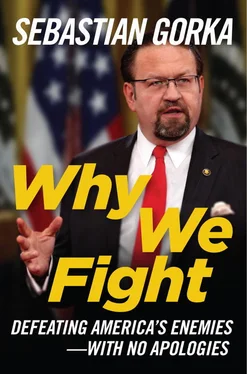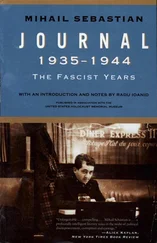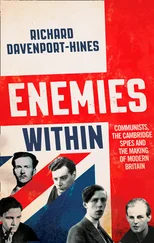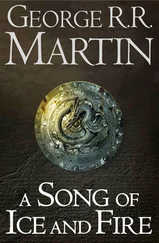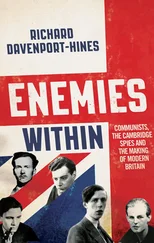The postwar takeover of national governments in Central Europe by communist parties under the Kremlin’s control and Stalin’s blockade of the American, British, and French sectors of occupied Berlin in 1948 clearly demonstrated the USSR’s antipathy to America, its former ally. As the Soviets flouted the terms of the Yalta treaty, which was designed to bring peace and stability to postwar Europe, the spread of the Kremlin’s influence and its ideology of communism became an urgent threat, first to the liberated nations of Western Europe, and eventually to the United States.
In the decades that followed, Europe was divided into a liberated West and East under dictatorial communist control. This bipolarity informed every dimension of geopolitics. Eventually a new balance of power emerged: the United States and her NATO allies on one side and the USSR and her vassal states of the Warsaw Pact on the other. This ideological confrontation provoked an enormous military buildup on both sides of the Iron Curtain. At the height of this arms race, America was devoting a tenth of its gross domestic product to defense, while the USSR committed at least a third of its national economy to its military.
At times, the standoff escalated frighteningly close to a kinetic war, even a nuclear exchange, as happened in 1962 when the Kremlin smuggled nuclear-armed missiles onto the island of Cuba, less than one hundred miles from the US mainland, undermining America’s ability to respond effectively to a first-strike nuclear attack by the Kremlin.
There were also “hot” shooting wars during this Cold War, Korea and Vietnam being the most significant, with numerous others in Africa, the Middle East, and South Asia. These conflicts, however, were most often waged by proxies for the West and USSR. Remarkably, the main antagonists of this global standoff, America and the Soviet Union, never went to war directly with one other. At no time did the United States have to deploy forces in combat operations against the arrayed forces of the Kremlin or its client states in Europe. Yet, this conflict did eventually end with one side decidedly the victor and the other radically transformed—a happy outcome that was in large part the result of a successful and non-kinetic information campaign.
On one mild November evening in 1989, the Berlin Wall—which had for decades separated the citizens of the free world from those under totalitarian control—was peacefully breached. German families that had been forcibly divided when the communist government of East Germany erected the barrier to prevent its own citizens from escaping to the West came together that night to destroy the most infamous symbol of the Iron Curtain.
Why did the communist rulers of East Germany allow this? More importantly, why didn’t the politburo in Moscow deploy tanks to crush those who demanded their freedom as it had done in Hungary in 1956 and Czechoslovakia in 1968? Why did the masters of the KGB and the gulags, who had been responsible for the deaths of millions of their own people, give up and allow their totalitarian system to fall? How did America and her allies win the war of ideas without firing a shot across Berlin’s Checkpoint Charlie? How had we won the perfect victory, vanquishing our foe without resorting to violence?
The answer to all these questions is found in the realm of counter-ideological warfare. This non-physical approach to conflict is of great importance in the post-9/11 world. Ideology did not die on that November night almost thirty years ago. America faces old ideologically-driven foes, such as Iran and North Korea, as well as the new totalitarianism of global jihadism. And the USSR may have been transmuted into the much smaller Russian Federation, but the values and goals of its elite remain inimical to our republic.
HOW THE WEST WON THE COLD WAR WITHOUT FIRING A SHOT
The victory against the antidemocratic ideology of communism was a product of many years of resistance to the actions and influence of the USSR, including an arms race that drove the Soviet economy past its breaking point. But the key to the final victory was the Reagan administration’s rejection of the longstanding US strategy of containing communism within its existing territory and decision to push back against Soviet power.
The USSR’s invasion and occupation of Afghanistan in 1979 convinced the incoming administration that containment had utterly failed and that Moscow’s power and influence could spread to other countries through military invasion or political subversion. Reagan therefore decided not only to assist the indigenous Afghan resistance in the largest CIA operation in history, but more importantly, to go on a global ideological counteroffensive to demonstrate once and for all the illegitimate nature of the regime in the Kremlin and the lies upon which its ideology of communism was built.
UNDERSTANDING THE IDEOLOGICAL THREAT AND WHAT IT TOOK TO WIN
After the Berlin blockade and communist takeover of the occupied nations of Central Europe clearly demonstrated that the Kremlin was no longer a friend to America, the new strategic response to Moscow was based upon an analysis of the USSR’s ideological worldview by George Kennan, an American diplomat stationed in Moscow after the war. The State Department asked him to explain why America’s erstwhile ally was now acting like an enemy and seemed prepared to go to war over the control of occupied Berlin.
Kennan explained the Kremlin’s “personality” in a classified telegram dispatched in 1946, known as the “Long Telegram.” The following year, he published a modified version titled “The Sources of Soviet Conduct” in the influential journal Foreign Affairs under the pseudonym “Mr. X.”
Kennan, who spoke Russian and had an intimate knowledge of the nation’s history and culture, identified the ideology of communism as the greatest influence on the current and future behavior of the Kremlin, warning that it threatened Western democracies, including the United States. Because of its belief that communism and capitalism were inimical, the Kremlin was committed to systematically destroying or undermining democratic market systems around the world until communism was the only form of government left.
The USSR pursued global domination through a variety of means—direct military action, such as blockading the overland supply routes to Berlin, indirect military action, such as arming proxies and allies like North Korea and Cuba, and non-violent actions such as espionage, subversion, and propaganda to weaken America and her allies.
President Harry Truman relied on Kennan’s masterly analysis in an address to a joint session of Congress on March 12, 1947, triggered by a growing communist threat to Greece and Turkey. In a speech that would shape American foreign policy and the national security stance of the Western world for decades to come, linking as it did the fate of the free world to American support for resistance to communism internationally, the president declared:
The peoples of a number of countries of the world have recently had totalitarian regimes forced upon them against their will. The Government of the United States has made frequent protests against coercion and intimidation, in violation of the Yalta Agreement, in Poland, Rumania, and Bulgaria.
At the present moment in world history nearly every nation must choose between alternative ways of life. The choice is too often not a free one.
One way of life is based upon the will of the majority, and is distinguished by free institutions, representative government, free elections, guarantees of individual liberty, freedom of speech and religion, and freedom from political oppression.
The second way of life is based upon the will of a minority forcibly imposed upon the majority. It relies upon terror and oppression, a controlled press and radio; fixed elections, and the suppression of personal freedoms.
Читать дальше
